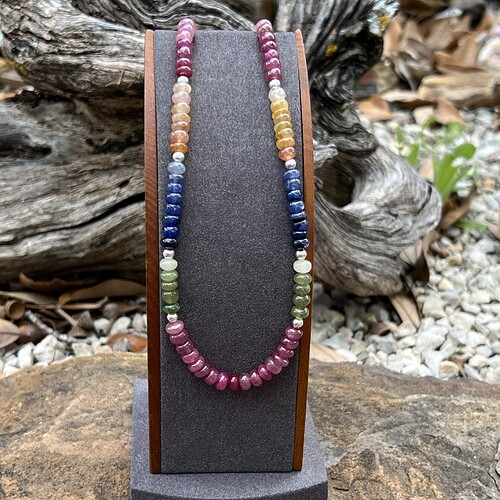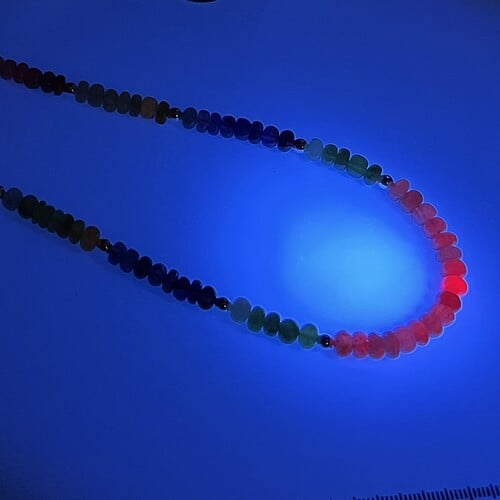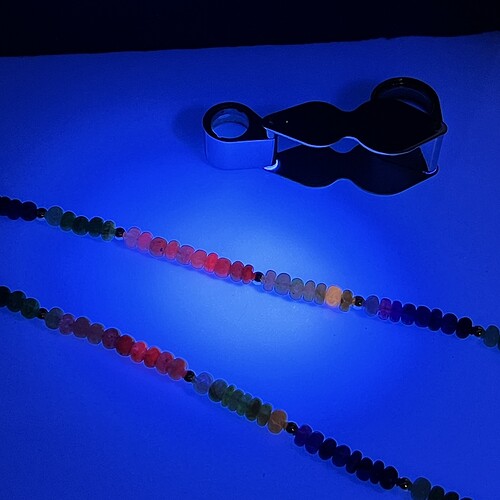need help with identification…thanks
Hi Mary,
That is a very colorful necklace! There is very little that can be done to assess what stones are in the strand without more information.
So, do you have a Loupe 10x? Can you take closeup images of the different stones?
Two key observations from the image above:
-
Most of the stones have inclusions of some type. Can you describe them, please?
-
How do the stones look in different types of light? (i.e Incandescent, Sunlight, and UV.) You will need a UV light of known wavelength Long Wave and Short Wave to distinguish optical behaviors for UV)
Here is a good reference on how each type of stone can be viewed. Specifically, on how the inclusions look… you can use the filters on the left side to narrow down stone characteristics …
Write down what you see and let us know.
Cheers!
-Troy
the red is very reactive under 365 nm, as are a couple of the lighter stones. The inclusions are irregular dark spots…like freckles on the inside ![]()
Tourmaline is normally very weak or inert with LW UV. It tends to react more to SW. Some corundum varieties can conditionally fluoresce under LW and/or SW, depending on treatments and origins.
Spinel could be possible…
The irregular inclusions could be flux deposits during glass fill treatment or deposits of dye or could be of natural origin.
It will be difficult to narrow down and identify the material without more data. Do you have a Chelsea Filter? It can be used to detect chromium treatments… mainly for Beryl but can show presence in other stone treatments…
I have this set of filter cards: "The Works" Gem Filter Set
Thanks for the info…definitely going to consider some of your testing products
I’'d say they’re sapphires. Multicolor sapphire beads
Thank you!




